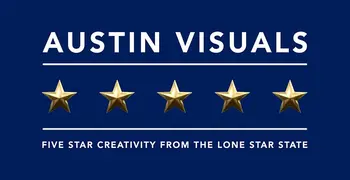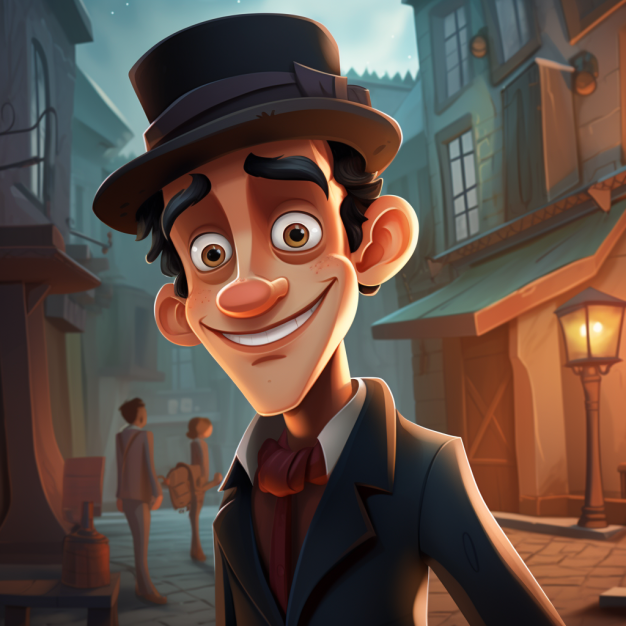
Introduction
The Evolution of Visual Storytelling
From ancient cave paintings to today’s high-tech CGI effects, visual storytelling has come a long way. In fact, humans have always been drawn to images. They tell stories, convey emotions, and capture moments. Over time, we’ve refined our tools and techniques. Now, we have two popular mediums: animation and cartoons.
Looking for top-notch tools to create high-quality short videos for your YouTube or TikTok channel? Click here to explore the best AI-Tools
Why Distinguish Between Animation and Cartoons?
Understanding the difference between animation and cartoons is crucial. Why? Because each has its unique charm, purpose, and audience. Moreover, in the world of media and entertainment, knowing the distinction can guide creators. It helps in choosing the right medium for the right message. Plus, for viewers, it enhances appreciation and enjoyment. After all, there’s a reason why some stories are animated films and others are Saturday morning cartoons.
Historical Context
The Origins of Animation
Animation’s roots run deep. In fact, long before computers or film, people experimented with moving images. Remember the zoetrope? This early device, invented in the 19th century, spun images in a circle. When viewed through slits, the images seemed to move. Simple, yet magical. This was just the beginning. As technology advanced, so did animation. From hand-drawn frames to computer-generated imagery, animation has constantly evolved. Today, it’s a blend of art and cutting-edge technology.
The Birth and Evolution of Cartoons
Cartoons, on the other hand, started as simple drawings. Think back to early newspaper comic strips. They were static, yet expressive. Over time, these drawings took on a life of their own. They jumped from paper to screen. Early 20th-century filmmakers began experimenting. They turned these drawings into moving images. Thus, the cartoon film was born. Over the decades, cartoons have transformed. From black and white to color, from silent to sound, they’ve adapted. Now, they’re a staple in entertainment, especially for kids.
In essence, both animation and cartoons have rich histories. While they’ve taken different paths, they share a common goal: to tell stories that captivate and inspire.

Differences Between Animated and Cartoon – Austin Visuals
Definition and Characteristics
What is Animation?
At its core, animation brings images to life. It’s a method of making pictures move, creating the illusion of life. But how? By rapidly displaying a sequence of images with slight differences.
Types of Animation
There are several types. First, there’s 2D animation. This is flat, using height and width. Think classic Disney films. Next, 3D animation adds depth. It’s what you see in movies like “Toy Story”. Then, there’s stop-motion. This involves photographing objects, moving them bit by bit. Films like “Coraline” showcase this technique beautifully.
Common Uses and Applications
Animation isn’t just for movies. It’s everywhere. Video games use it to create immersive worlds. Advertisers use it to sell products. Educators use it to explain complex topics. In short, its versatility is unmatched.
“Discover top-notch animation courses at Bloop Animation. Unlock your creative potential and start your animation journey today!”
What is a Cartoon?
A cartoon is a type of animation. But it’s more stylized, often exaggerated. It’s not always about realism. Instead, it’s about expression.
Characteristics of Cartoons
Bright colors, bold lines, and exaggerated features. These are the hallmarks of cartoons. They’re often simpler than detailed animations. Yet, they pack a punch. Their simplicity conveys emotion and humor effectively.
Primary Purpose and Audience
Cartoons primarily entertain. Especially kids. But adults love them too. Shows like “The Simpsons” prove that. They can be funny, serious, or both. But above all, they connect with the audience, leaving lasting impressions.
In conclusion, while both animation and cartoons use moving images, they serve different purposes. Animation can be realistic or abstract, while cartoons lean towards humor and expression.
Production Process
The Making of an Animated Feature
Creating an animated feature is no small feat. It’s a blend of artistry, technology, and storytelling.
Steps in Animation Production
First, there’s the concept phase. Here, ideas are born. Next comes storyboarding. Artists sketch the film’s main scenes. Then, there’s designing. Characters, backgrounds, and props take shape. Animation follows. Artists bring characters to life, frame by frame. Finally, post-production. Sound, music, and edits polish the film.
Tools and Technologies
Over the years, tools have evolved. Hand-drawn frames gave way to digital tablets. Software like Maya and Blender revolutionized 3D animation. Today, animators have a plethora of tools at their fingertips, making the impossible possible.
The Creation of Cartoons
Cartoons, while similar, have their own unique process.
Distinctive Elements in Cartoon Production
Unlike detailed animations, cartoons thrive on simplicity. Bold lines and bright colors are key. Often, fewer frames per second are used. This gives cartoons their signature “snappy” feel.
Techniques in Cartoon Creation
Traditionally, cartoons were hand-drawn. Think “Looney Tunes”. Today, digital tools dominate. Software like Adobe Animate or Toon Boom makes cartoon creation efficient. Yet, the essence remains. It’s all about exaggeration, humor, and connection.
Audience and Purpose
Animation’s Broad Appeal
Animation is a universal language. It transcends borders, cultures, and ages.
From Children to Adults
Kids adore animations. Bright colors, catchy songs, and relatable characters draw them in. But it’s not just for the young. Adults, too, find solace in animation. Complex themes, intricate plots, and stunning visuals cater to mature audiences. Films like “Up” or “Spirited Away” resonate across age groups. In essence, animation speaks to the heart, regardless of age.
Cartoons’ Targeted Demographics
While animation has a wide net, cartoons often target specific groups.
How Cartoons Cater to Specific Age Groups
For toddlers, cartoons are simple and educational. Think “Peppa Pig” or “Bluey”. As kids grow, so does complexity. Shows like “Teen Titans” or “Avatar” offer deeper plots. Yet, some cartoons defy age. “SpongeBob SquarePants”, for instance, has fans from all age brackets. The humor, the characters, and the situations strike a chord. So, while cartoons might seem age-specific, their charm often spans generations.
In conclusion, both animation and cartoons have their unique audiences. While animation casts a wide net, cartoons often zoom in, targeting specific age groups with precision.
Artistic Styles and Themes
The Artistic Range in Animation
Animation is a vast canvas. It offers endless possibilities for artists.
From Realistic to Abstract
On one end, there’s hyper-realism. Think of movies like “The Lion King” (2019). The animals, the landscapes – they mirror reality. On the other end, there’s the abstract. Films like “Fantasia” play with form, color, and motion. They don’t mimic reality; they reimagine it. This spectrum allows animators to tell diverse stories, each with its unique flair.
The Consistent Style of Cartoons
Cartoons, while versatile, often stick to a signature style.
Recognizable Features
Bold outlines, exaggerated expressions, and vibrant colors. These are the hallmarks of cartoons. Whether it’s the large eyes of “Powerpuff Girls” or the iconic look of “Mickey Mouse”, cartoons have a distinct, recognizable style.
Common Themes
Friendship, adventure, humor – these themes run deep in cartoons. They resonate with audiences, young and old. While the settings might change, from a pineapple under the sea to a town called Springfield, the core themes remain consistent.
In summary, animation offers a broad artistic palette, from the real to the surreal. Cartoons, while diverse, often stay true to their roots, offering familiar visuals and timeless themes.
Impact on Pop Culture
Iconic Animated Features and Their Influence
Animated features have left an indelible mark on pop culture.
Films That Shaped Generations
Movies like “The Lion King” or “Frozen” are more than just films. They’re cultural phenomena. Their songs, characters, and quotes permeate daily life. Who hasn’t belted out “Let It Go” or used “Hakuna Matata” as a life mantra?
Beyond the Screen
These films influence fashion, music, and even language. Merchandise, theme park attractions, and stage adaptations further embed them in popular culture. Their reach is vast, touching hearts globally.
Memorable Cartoons and Their Legacy
Cartoons, with their episodic nature, become a staple in households.
Characters That Became Icons
Characters like Bugs Bunny or Scooby-Doo are more than just TV stars. They’re icons. Their catchphrases, antics, and personalities are instantly recognizable, even decades later.
A Legacy That Lives On
These cartoons shape childhoods. They teach, entertain, and inspire. And their influence doesn’t wane. Reboots, merchandise, and even memes ensure they remain relevant. They’re a testament to the enduring power of well-crafted stories and characters.
The Future: Blending the Lines
How Modern Media is Merging Animation and Cartoon Elements
The boundaries between animation and cartoons are becoming increasingly blurred.
A Seamless Fusion
Today, it’s common to see animated films borrowing cartoonish elements. Likewise, cartoons often employ sophisticated animation techniques. This fusion enhances storytelling, making it richer and more dynamic.
Technology’s Role
Advancements in technology play a big part. Tools that were once exclusive to high-end animation are now accessible to all. This democratization allows for greater experimentation and crossover.
The Rise of Hybrid Visual Storytelling
This blending has given birth to a new genre: hybrid visual storytelling.
Best of Both Worlds
Hybrid stories combine the depth and detail of animation with the expressiveness of cartoons. They cater to a wider audience, appealing to both kids and adults.
Pioneers and Standouts
Shows like “Into the Spider-Verse” exemplify this trend. They mix styles, techniques, and narratives, creating a visually stunning and emotionally resonant experience.
Conclusion
Recap of the Key Differences
Animation and cartoons, while intertwined, have distinct characteristics. Animation spans a broad spectrum, from hyper-realistic to abstract. Cartoons, with their signature style, often target specific demographics, delivering humor and expression in spades.
The Vital Role in Visual Media
Both animation and cartoons hold immense value in visual media. They captivate, educate, and inspire. Their influence on pop culture is undeniable, shaping generations and leaving lasting legacies.
For those intrigued by the magic of moving images, there’s a world to explore. Dive deep into the realm of animation. Discover its nuances, its beauty, its power. And where better to start than Austin Visuals 3D Animation Studio ? Explore our portfolio. Witness top-notch animation in action. Let the visuals speak for themselves.
At Austin Visuals, We Offer:
- Custom 3D Animation: Our team crafts stunning 3D animations tailored to your needs, bringing your vision to life.
- 2D Animation Services: We create engaging 2D animations that captivate audiences and convey messages effectively.
- Medical Animation: Our experts design accurate and detailed medical animations, perfect for education and marketing.
- Architectural Visualization: We transform blueprints and designs into realistic architectural renderings.
- Product Animation: Our animators showcase products in dynamic and engaging ways, enhancing marketing efforts.
- Virtual Reality (VR) Solutions: We immerse users in high-quality VR experiences, perfect for training or showcasing new concepts.
- Augmented Reality (AR) Development: Our AR solutions overlay digital information in the real world, offering interactive experiences.
- Motion Graphics: We design dynamic motion graphics that enhance videos, presentations, and advertisements.
- Visual Effects (VFX): Our VFX team adds magic to movies, commercials, and videos, making the impossible look real.
- Interactive Presentations: We craft interactive presentations that engage audiences and convey information seamlessly.
For inquiries or questions Call Us, (512) 591-8024, Email us: i[email protected], or use the form below to send us a message. We’re ready to answer any questions you have so that we can deliver your creative project on time and to the highest standard possible.
Have A Project You Want To Discuss? Drop us a line!








